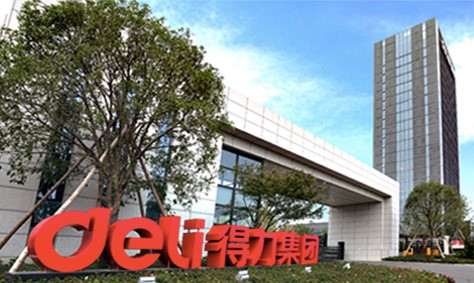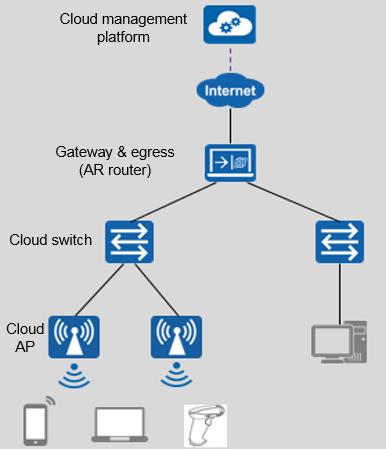Huawei CloudCampus Enables Unified and Efficient Warehousing for Deli
Enterprise products, solutions & services
Founded in 1988, Deli Group Co., Ltd. has been committed to providing cost-effective stationery products and office supplies for global consumers during the past 31 years. The company has grown into the largest integrated stationery supplier in China. It has been ranked No.1 in China’s stationery industry many times, and offers a world-leading warehousing and logistics system that spans 38 cities throughout the country.

Recent years have seen the rapid development of the office stationery sector, which presents many challenges and opportunities to Deli, a leader in this product category. With the fast growth of the market and continuous innovation of sales models, Deli has raised its requirements for logistics development. The company seeks not only to improve its overall logistics efficiency, but also to enhance the logistics service level. Deli plans to actively empower the smooth development of the upstream and downstream supply chain. In addition, Deli aspires to build a modern logistics system with lean management, efficient operation, controllable costs, visualized interface, and standardized processes to improve its core competitiveness.

As an important part of Deli’s modern logistics system, warehousing requires high-quality wireless network coverage to implement automation. Currently, Deli’s warehouses are distributed throughout more than 30 cities across China. This brings many challenges to network planning, deployment, management, and O&M. These challenges include:
Huawei CloudCampus Solution centrally manages Access Points (APs) and switches in the cloud. The solution delivers one-stop, full-lifecycle management capabilities including cloud-based WLAN planning, network service management, and device status visualization. After cloud-managed devices register with Huawei’s cloud management platform, service deployment and adjustment, user access control, and network O&M are all performed on the platform. Engineers do not need to perform on-site configuration and troubleshooting.

Cloud-based WLAN Planner is used to implement pervasive, online coverage of wireless signals in the warehouse areas. In addition, the 2.4G/5G dual-band and automatic radio calibration functions are enabled to offer a high-quality network experience for workers.
The firewall or router is deployed at the Internet egress to defend against attacks from the Internet. It also functions as the device and user management gateway to provide access for wired and wireless users while implementing Plug-and-Play (PnP) for cloud-managed devices. Gigabit Power over Ethernet (PoE) access switches, functioning as cloud switches, provide access for cloud APs and wired terminals such as PCs and printers. Cloud APs deliver wireless access capability for wireless terminals such as mobile phones, scanners, and tablets. Terminal whitelisting can be configured to prevent unauthorized access.
Maintenance engineers can view the running status and usage of network devices anytime and anywhere through the cloud management platform. Cloud-based inspection ensures the normal running of the tenant network by inspecting the cloud-managed devices on the network.
Huawei’s cloud management platform helps Deli aggregate its national warehouse networks and implement unified network planning, deployment, management, and O&M.
After the CloudCampus is deployed for Deli’s nationwide warehouses, the overall network construction, management, and O&M efficiency is significantly improved. Labor costs are substantially reduced, and network problems can be resolved quickly. The Huawei solution is highly recognized by senior executives of Deli.
Huawei CloudCampus Solution helps Deli meet the new opportunities of logistics development and lays a solid foundation for the company to embrace the Smart Office era driven by IoT data. Additionally, the Huawei solution helps Deli deliver ultimate customer experiences and showcase its national recognition for quality and services. By leveraging Huawei’s stable and reliable CloudCampus, Deli is leading the future of the stationery industry in China.